Nematodes are one of the major challenges that peanut growers deal with. Peanut root-knot nematode is the main nematode pest for Florida peanut growers. Crop rotation, nematicide application, and use of resistant varieties are the main tools available for growers. (For more information on nematode management in peanut production, use the following publication link: Management of Plant-Parasitic Nematodes in Florida
Peanut Production) This year, in-season options (nematicide application and resistant varieties) were evaluated in replicated small plot trials at the UF/IFAS North Florida Research and Education Center – Suwannee Valley (Live Oak) and Plant Science Research and Education Unit (Citra).
–
Live Oak Trial
In the trial at Live Oak, the major conventional nematicides (Velum, Propulse, Vydate C-LV, AgLogic 15GG, and Telone II) were evaluated, along with the primary root-knot nematode resistant cultivar, TifNV High O/L. Telone II is a fumigant nematicide (moves through soil as a gas), whereas the others are non-fumigant nematicides, which are granular or liquid formulations. Except for the resistant cultivar treatment, all plots were planted with GA 06G, which is susceptible to root-knot nematodes. Treatment details are provided in Table 1 below.
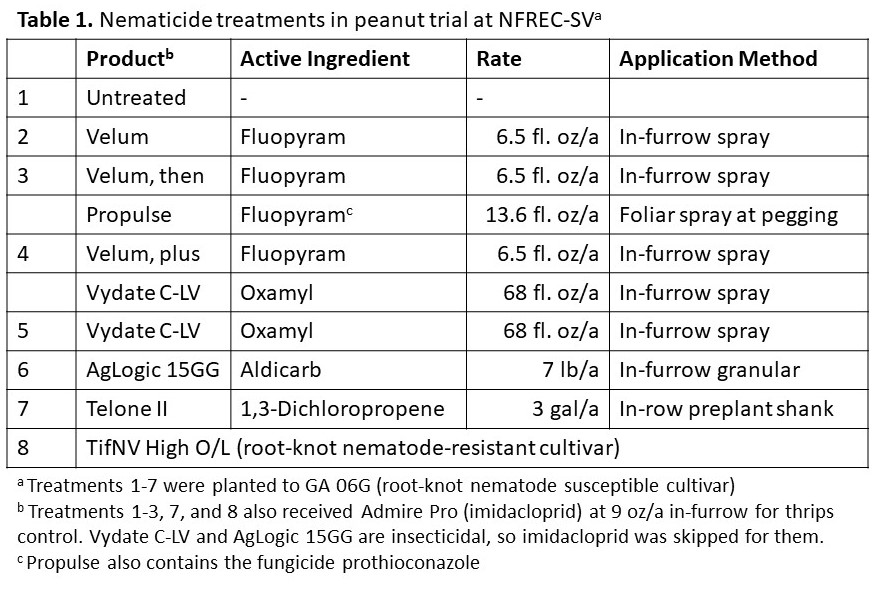
–
At midseason (44 days after planting), root-knot nematode infection in roots was assessed (Figure 1 below). Typically, early to mid-season is the most important timing for nematode control by nematicides. Populations often increase by harvest, but control early in the season often increases yield. In the trial at Live Oak, any nematicide treatment or the resistant cultivar were effective at midseason, except that Velum or Velum+Propulse did not reduce nematode infection in roots. By harvest, only Telone II or TifNV maintained control of soil populations of root-knot nematodes, showing control was more long-lasting for those treatments.
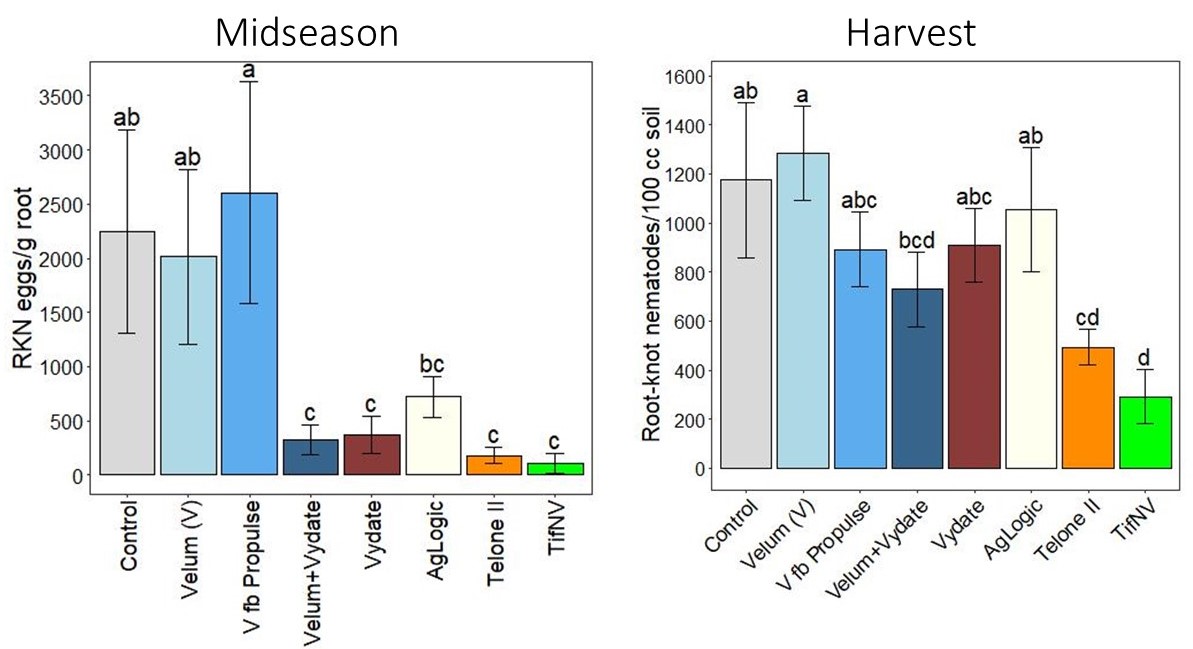
Figure 1. At NFREC-SV (Live Oak), root-knot nematode populations from roots at midseason (left) and soil root-knot nematode populations at harvest (right). Values with the same letter are not significantly different (Fisher’s protected LSD, P<0.05).
–
The resistant cultivar provided the most reduction in pod galling at harvest (insight into season-long nematode damage), but Telone II or treatments with Velum also provided control (Figure 2). Yield was substantially better for TifNV than any nematicide treatment, which were in combination with the susceptible cultivar GA 06G (Figure 2). Telone II also significantly increased yield. Yield tended to be greater for Velum followed by Propulse than untreated, although this difference was not statistically significant. Overall, nematode pressure was high at the site, yield was low, and peanut growth was visibly affected by nematodes (Figure 3).
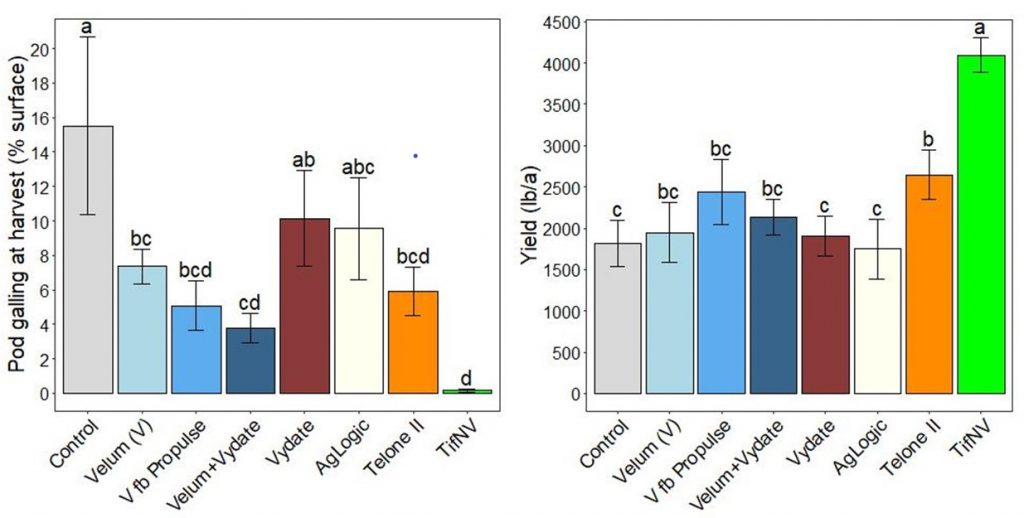
Figure 2. At NFREC-SV (Live Oak), mean pod galling damage from root-knot nematodes at harvest (left) and yield (right). Values with the same letter are not significantly different (Fisher’s protected LSD, P<0.05).
–
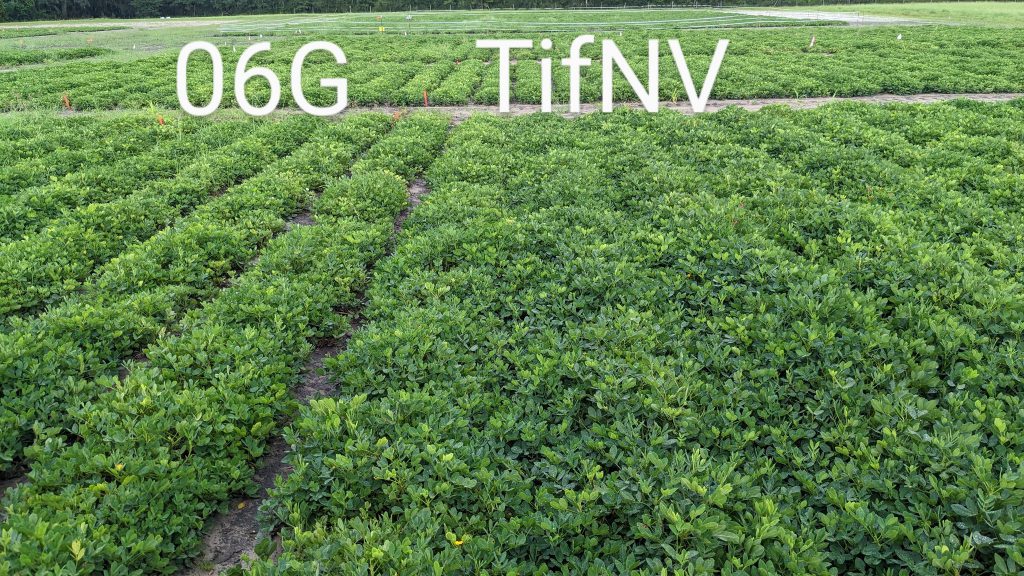
Figure 3. Live Oak peanut trial at 119 days after planting. Canopy closure was much greater for TifNV High O/L (root-knot nematode resistant) than GA 06G cultivars (susceptible).
–
Citra Trial
At Citra, Velum and Vydate C-LV (at various rates and application methods) nematicides along with TifNV resistant cultivar were assessed as listed in Table 2 below. Nematicide treatments were in combination with GA 06G, which is root-knot nematode susceptible.
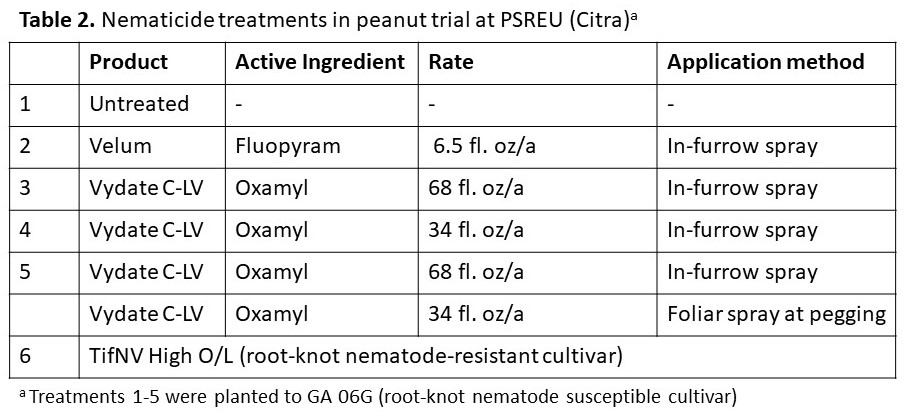
–
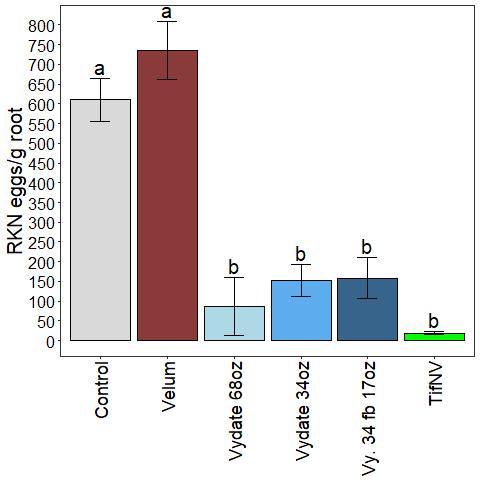
Figure 4. At Citra site, root-knot nematode populations from peanut roots at midseason, 49 days after planting. Values with the same letter are not significantly different (Fisher’s protected LSD, P<0.05).
At the Citra site, root-knot nematode infection in roots was also assessed at midseason (49 days after planting). Root-knot nematode populations in roots were less for any Vydate C-LV treatment or TifNV than untreated control or Velum (Figure 4 right). By harvest, there no significant differences in root-knot nematode abundances in soil among treatments, but abundances tended to be lower for TifNV or the double application of Vydate C-LV than other treatments (Figure 5).
Despite abundant root-knot nematodes and extensive root infection, there was no galling on peanut roots or pods, a typically symptom of root-knot nematode damage. While there were some differences in canopy closure during the season (Figure 6), by the end of the season peanuts were all healthy and vigorous with no visual differences among treatments. Peanut yield was high and there were no significant differences in yield among any treatments (Figure 5). Altogether, nematode pressure on peanut growth did not seem to be substantial in this trial, which was likely a combination of good growing conditions and an unusual peanut root-knot nematode isolate at the site that was not very damaging to peanut.

Figure 5. Root-knot nematode soil abundances at harvest (left) and peanut yield (right). Values were not significantly affected by treatments (ANOVA, P>0.05).
–
Summary
-
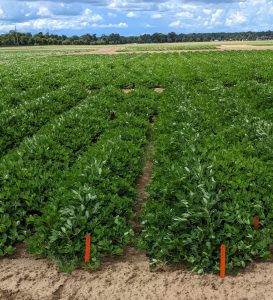
Figure 6. At the Citra site at 74 days after planting, canopy closure was better for TifNV resistant cultivar (right) than GA 06G root-knot nematode susceptible cultivar (left). By harvest, there were no visual differences among treatments.
Typically, consistent results in at least two years or locations are needed before making conclusions about products/cultivars. These take-away points are formulated with this in mind.
- Resistant peanut cultivars (TifNV High O/L is the most widely available) are currently the best root-knot nematode management option, particularly under severe nematode pressure.
- Telone II fumigation probably provides somewhat better control that most non-fumigant nematicide treatments, although more testing at this low rate (3 gallons/acre) is desired. (In most crops, fumigation is typically the best nematicide option.) Cost and equipment availability is also a limitation of fumigation.
- All of the non-fumigant nematicides (AgLogic 15GG, Vydate C-LV, and Velum/Propulse) provided some benefits, but none were clearly better than the others. If a resistant cultivar is not an option, growers may want to try different nematicides to see if one performs better on their farm.
-
- Vydate C-LV provided consistent midseason nematode population control, but this did not translate to yield benefits. More testing is needed with higher nematode pressure.
- Similarly, AgLogic 15GG provided some nematode population control, but no yield benefits. This is similar to results from last year.
- Velum applied in-furrow only provided the least benefits, although it did reduce nematode damage symptoms at harvest in the Live Oak trial.
- Velum followed by Propulse provided the best yield return of non-fumigant treatments (600 lb/a yield increase over control at Live Oak), but this isn’t consistent with past results. Typically, in-furrow application provides the biggest yield benefit and at-pegging applications provide a small boost, if any.
- Testing different combinations of nematicides in-furrow and at pegging is of interest based on the apparent variation in product strengths in these trials.
-
- Salibro: A Recently-Registered Conventional Nematicide for Select Horticulture Crops - March 7, 2025
- What Cotton Cultivars have Resistance or Tolerance to Southern Root-knot and Reniform Nematode? - February 28, 2025
- How Well Do Root-Knot Nematode Resistant Peanut Cultivars Perform in Florida? - February 14, 2025
